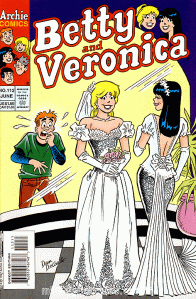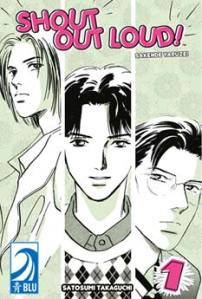One theme that’s come up a lot in recent discussion of scanlations is that publishers need to do something to concoct a widespread alternative that provides similar access to the material but with the consent of creators and, one assumes, the potential to turn the portion of the scanlation audience that aren’t currently paying customers into buyers, at least to some degree. One potential obstacle to that that particularly interests me are the creators themselves. I’ve heard that there’s a fair amount of resistance to digital distribution among manga-ka, either because they conceived their comics to be read on paper or because they’re concerned about unlimited reproduction of digital versions of their work. (Who left this barn door open?)
Now, I’ve only heard about this reluctance from a few people, but they strike me as people who are in a position to know. Still, it’s anecdotal, and I recognize that. But, running with the premise that this resistance exists to varying degrees, I’d like to ask you to engage in a little role playing. What argument (preferably diplomatic) would you make to a manga-ka to convince them of the benefits of more timely, less immediately profitable, digital delivery of their work? The obvious one is that it’s already happening without their participation or consent, and they might as well control it to whatever degree possible, but I’d like to hear your thoughts on the subject.
Updated: Simon Jones of the possibly not-safe-for-work Icarus Publishing blog cuts to the chase and asks “Why should publishers pay for digital rights?”
Updated: Jake Forbes, manga author, adapter and aficionado, stops by MangaBlog and takes everybody to the woodshed.






 Among my various comics partialities, I really like stories that rely heavily on specific workplaces or careers. From
Among my various comics partialities, I really like stories that rely heavily on specific workplaces or careers. From  Realtors: Thanks to HGTV, there aren’t many untold aspects of the real-estate profession, so I’m thinking of a weirder take on the topic. It occurs to me that fictional vampires and demons and sorcerers always have great old money pits in which to reside, but how do they acquire them? It then occurs to me that there must be specialists in finding just the right dilapidated pile of stone for just the right supernatural or other-dimensional buyers. They might even have interior designers on staff to make sure the cobwebs are just so and the wallpaper is suitably stained and peeling. And they certainly track the crime reports to find properties with the kind of history that might make them unattractive to the average mortal. (Stubborn bloodstains lower resale value!)
Realtors: Thanks to HGTV, there aren’t many untold aspects of the real-estate profession, so I’m thinking of a weirder take on the topic. It occurs to me that fictional vampires and demons and sorcerers always have great old money pits in which to reside, but how do they acquire them? It then occurs to me that there must be specialists in finding just the right dilapidated pile of stone for just the right supernatural or other-dimensional buyers. They might even have interior designers on staff to make sure the cobwebs are just so and the wallpaper is suitably stained and peeling. And they certainly track the crime reports to find properties with the kind of history that might make them unattractive to the average mortal. (Stubborn bloodstains lower resale value!) Travel writers: This is basically the urban version of the previous entry, but with a focus on cityscapes rather than canyons or forests. If I were forced to pick, I’d probably go with a murder mystery angle since the setting would change frequently. Then you could avoid the whole question of why everyone didn’t move away from Cabot Cove since it had such an astonishingly high homicide rate for a small town in Maine.
Travel writers: This is basically the urban version of the previous entry, but with a focus on cityscapes rather than canyons or forests. If I were forced to pick, I’d probably go with a murder mystery angle since the setting would change frequently. Then you could avoid the whole question of why everyone didn’t move away from Cabot Cove since it had such an astonishingly high homicide rate for a small town in Maine. I think if I were constructing a course like that, I would probably use Paul Gravett’s
I think if I were constructing a course like that, I would probably use Paul Gravett’s 

